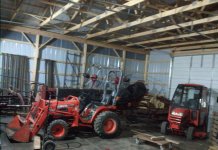I have never heard of or met a roofer who didn't like ridge vents. I'm at a loss to why anybody would not want them other then not liking how they look. The option of going with another form of venting to me isn't as nice or clean looking. And usually not as effective. The basic premise to venting is that you want air to enter the roof at the lowest point, the soffit, and exit the roof at the highest point, the ridge. As air gets hot, it rises, which creates air flow through the timbers used to build the roof. This air flow keeps the wood dry. Attics are not designed to be cool, and in my opinion, trying to cool an attic is a waste of time and energy. Better to supper insulate the rooms below the attic and let it get nice and hot so more air flows through it. The air flow is critical to the life of the roof and the lumber supporting it.
A ridge vent gives you the maximum amount of air flow. Massive gable vents also accomplish this to some degree, but the area in the middle of the house/roof area doesn't get as much air as the area where the gable vents are. When using multiple vents, you limit the air flow to those areas, so the areas where there are no vents, especially up near the peak, don't get as much air flow.
In reality, you will probably be fine. Venting is very important, but it will take decades to know if you have any issues or not. Most roofs don't last that long anyway, so even if you have it wrong, odds are that you will only shorten the life of the roof a small amount and never know the difference. There is best known way to build, what has worked for years, and then just plain wrong. I think you are in the category of doing what has worked for years.
As for the cedar for your fascia, how are you going to flash it now that the roof is already on? Here, we install the fascia before the roof. Then after rolling out the paper, the flashing goes on so it overlaps the fascia and nothing can get behind the fascia. Water will run off the edge of the shingles, then go back under the shingle and onto the paper below it. Then it will go over the flashing and down the fascia before dripping down to the ground.
Not having flashing done when the roof was installed makes me curious how it's done there?
